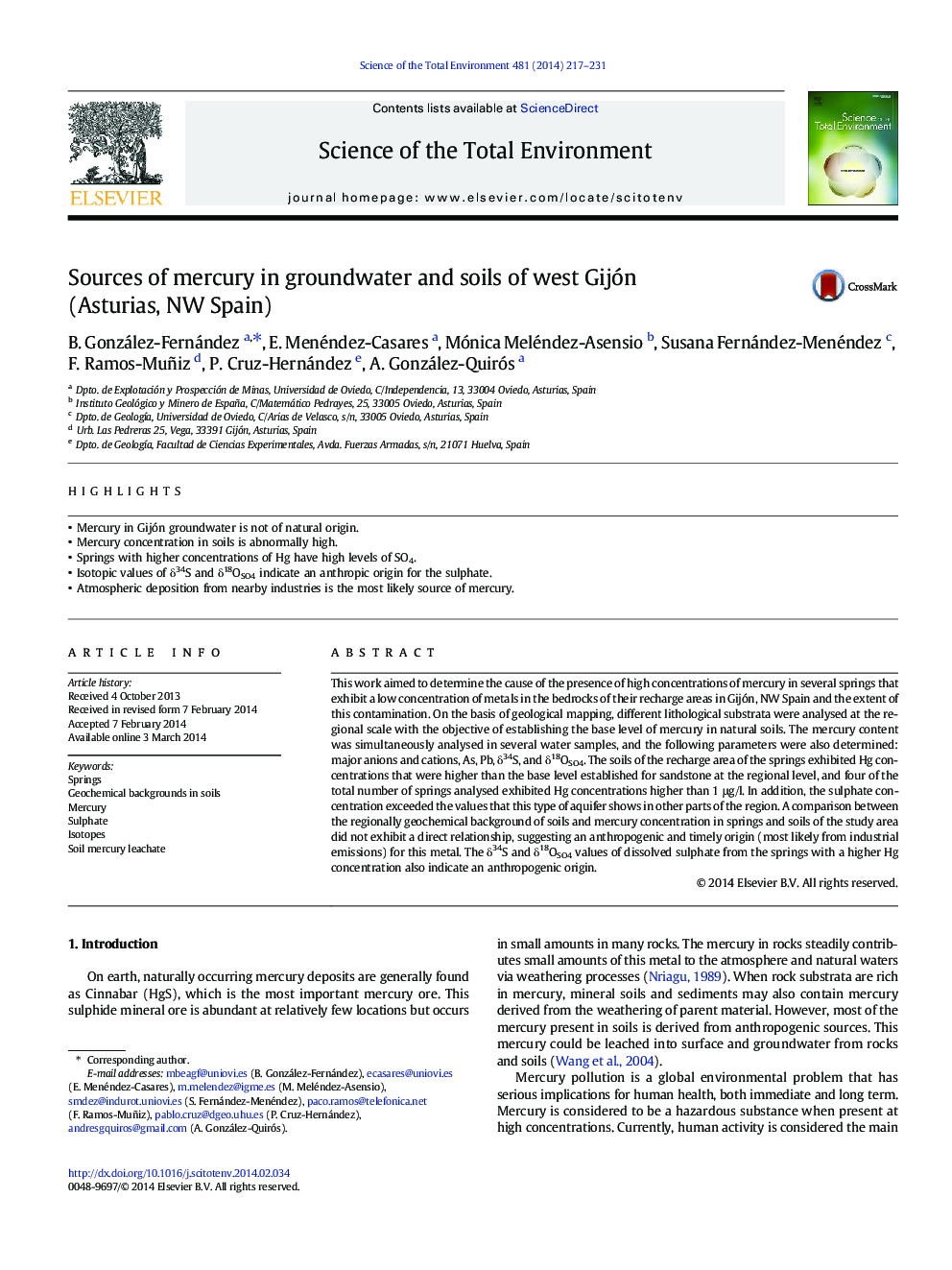| Article ID | Journal | Published Year | Pages | File Type |
|---|---|---|---|---|
| 6330848 | Science of The Total Environment | 2014 | 15 Pages |
Abstract
This work aimed to determine the cause of the presence of high concentrations of mercury in several springs that exhibit a low concentration of metals in the bedrocks of their recharge areas in Gijón, NW Spain and the extent of this contamination. On the basis of geological mapping, different lithological substrata were analysed at the regional scale with the objective of establishing the base level of mercury in natural soils. The mercury content was simultaneously analysed in several water samples, and the following parameters were also determined: major anions and cations, As, Pb, δ34S, and δ18OSO4. The soils of the recharge area of the springs exhibited Hg concentrations that were higher than the base level established for sandstone at the regional level, and four of the total number of springs analysed exhibited Hg concentrations higher than 1 μg/l. In addition, the sulphate concentration exceeded the values that this type of aquifer shows in other parts of the region. A comparison between the regionally geochemical background of soils and mercury concentration in springs and soils of the study area did not exhibit a direct relationship, suggesting an anthropogenic and timely origin (most likely from industrial emissions) for this metal. The δ34S and δ18OSO4 values of dissolved sulphate from the springs with a higher Hg concentration also indicate an anthropogenic origin.
Related Topics
Life Sciences
Environmental Science
Environmental Chemistry
Authors
B. González-Fernández, E. Menéndez-Casares, Mónica Meléndez-Asensio, Susana Fernández-Menéndez, F. Ramos-Muñiz, P. Cruz-Hernández, A. González-Quirós,
